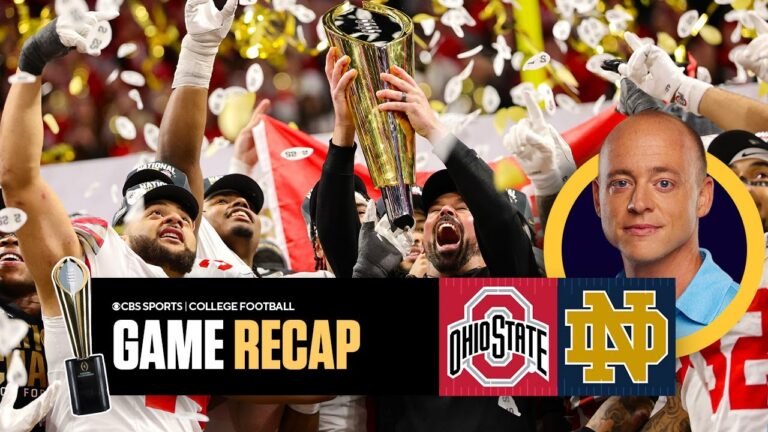Ohio State’s triumphant national title win on Monday night wasn’t just a victory for the Buckeyes—it was a statement for the Big Ten Conference. With back-to-back championships under their belt, the Big Ten has firmly established itself alongside the SEC as the undisputed kings of college football. Yet, beneath the celebrations lies a growing divide that threatens the soul of the sport—a lack of parity that has sparked fierce debates among analysts and fans alike.
The tectonic shifts in college football’s landscape over the past year have only widened the gap between the “haves” and “have-nots.” Powerhouses like Oklahoma, Texas, USC, Oregon, and Washington have jumped ship to join either the Big Ten or SEC, creating a concentrated pool of elite talent. These two conferences are no longer just dominant; they’re monopolizing the sport, leaving smaller programs and conferences in the dust.
Amid this seismic shift, college football analyst Josh Pate didn’t hold back. Taking to his X account, Pate shared his unfiltered thoughts on the growing disparity, delivering a scathing critique of the sport’s lack of parity.
“Cinderella? Not in This League.”
For fans dreaming of an underdog story akin to March Madness, Pate offered a harsh reality check. “The only CFP Cinderella you’ll ever get is a Goliath being given a third chance, posing as a lower seed,” he wrote. His words, dripping with skepticism, resonated with over 400,000 viewers by Tuesday morning, igniting a firestorm of discussion.
Pate’s comment strikes at the heart of what many see as college football’s growing problem: the near impossibility of smaller programs breaking through the glass ceiling. In this era, Cinderella stories aren’t just rare—they’re practically nonexistent.
Fans Weigh In: No Room for Fairytales
Ohio State’s 14-2 victory over Notre Dame, another 14-2 powerhouse, only fueled the debate. Fans flooded social media, echoing Pate’s concerns. One fan quipped, “The fourth-place finisher in the Big Ten is winning the national championship tonight.” Another bluntly added, “There’s no Cinderellas in CFB, bro.”
Even critics of the current system joined the conversation. “So you want to go back to the SEC being handed national championships rather than earning it?” one commenter fired back, highlighting how even the perception of fairness in college football has eroded.
The only CFP Cinderella you’ll ever get is a Goliath being given a third chance posing as a lower seed
— Josh Pate (@JoshPateCFB) January 21, 2025
Big Ten and SEC Domination: The Numbers Don’t Lie
Pate’s argument finds strong support in the cold, hard stats. Of the final eight slots in the College Football Playoff bracket, five were occupied by teams from the Big Ten and SEC. Even more telling, three of the four semifinalists hailed from these two power conferences. The dominance is undeniable, lending credence to Pate’s assertion that parity is little more than a pipe dream in modern college football.
The Bigger Picture: Is College Football at a Crossroads?
Ohio State’s championship wasn’t just a win—it was a spotlight on the widening gulf between elite programs and everyone else. With the Big Ten and SEC hoarding talent, resources, and prestige, smaller programs are being relegated to the margins, their chances of competing for a national title dwindling with each passing season.
Josh Pate’s words serve as both a critique and a warning: the magic of college football lies in its unpredictability, its ability to produce moments of pure, unfiltered drama. But if the current trajectory continues, that magic could be snuffed out by the sheer weight of monopolized power.
Fans yearning for a true Cinderella story are left wondering: will the sport ever break free from the iron grip of the Big Ten and SEC? Or is college football destined to become a two-conference arms race, where only the richest programs survive and thrive?
The Buckeyes may have lifted the trophy, but the larger battle for the soul of college football is far from over.
